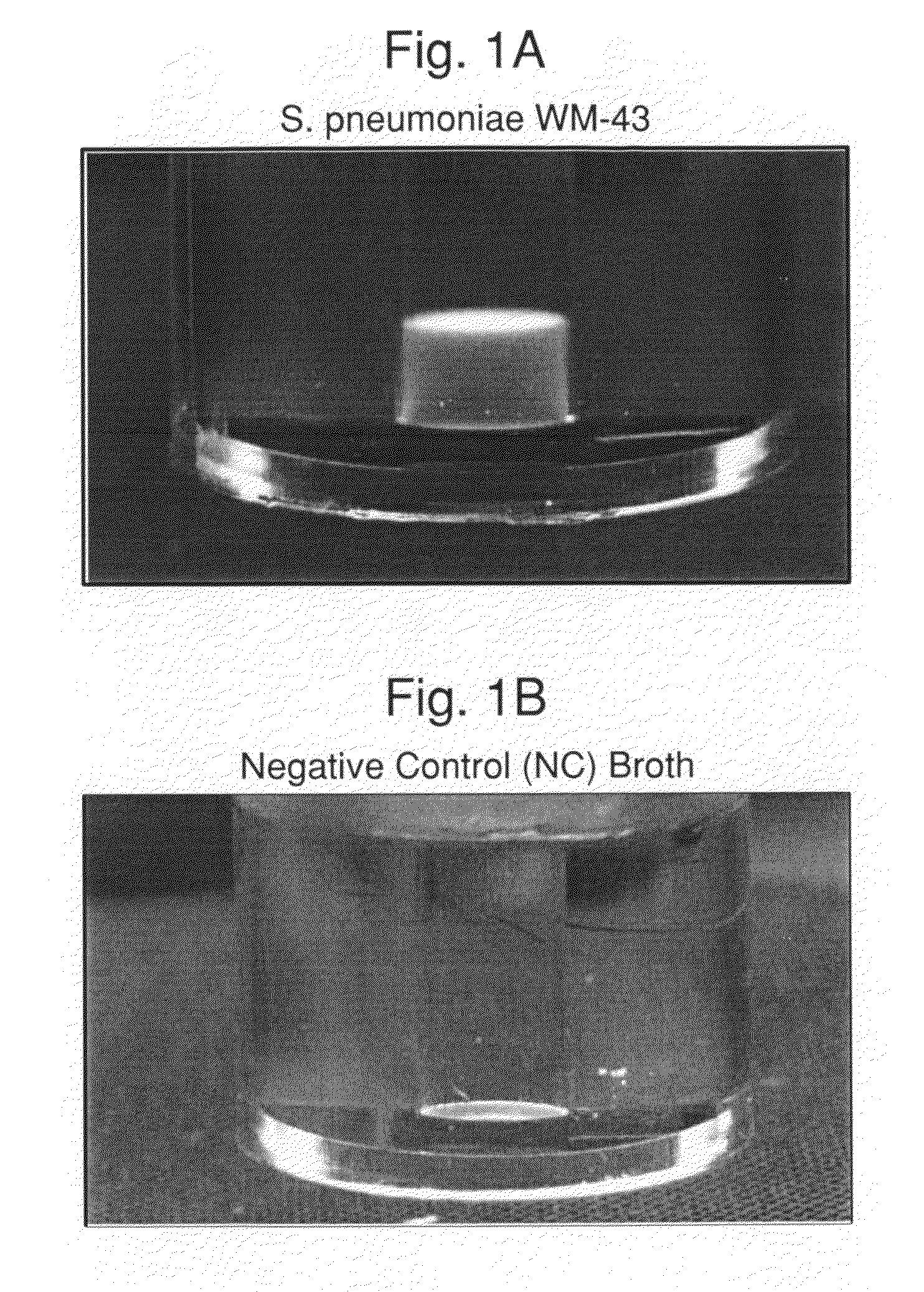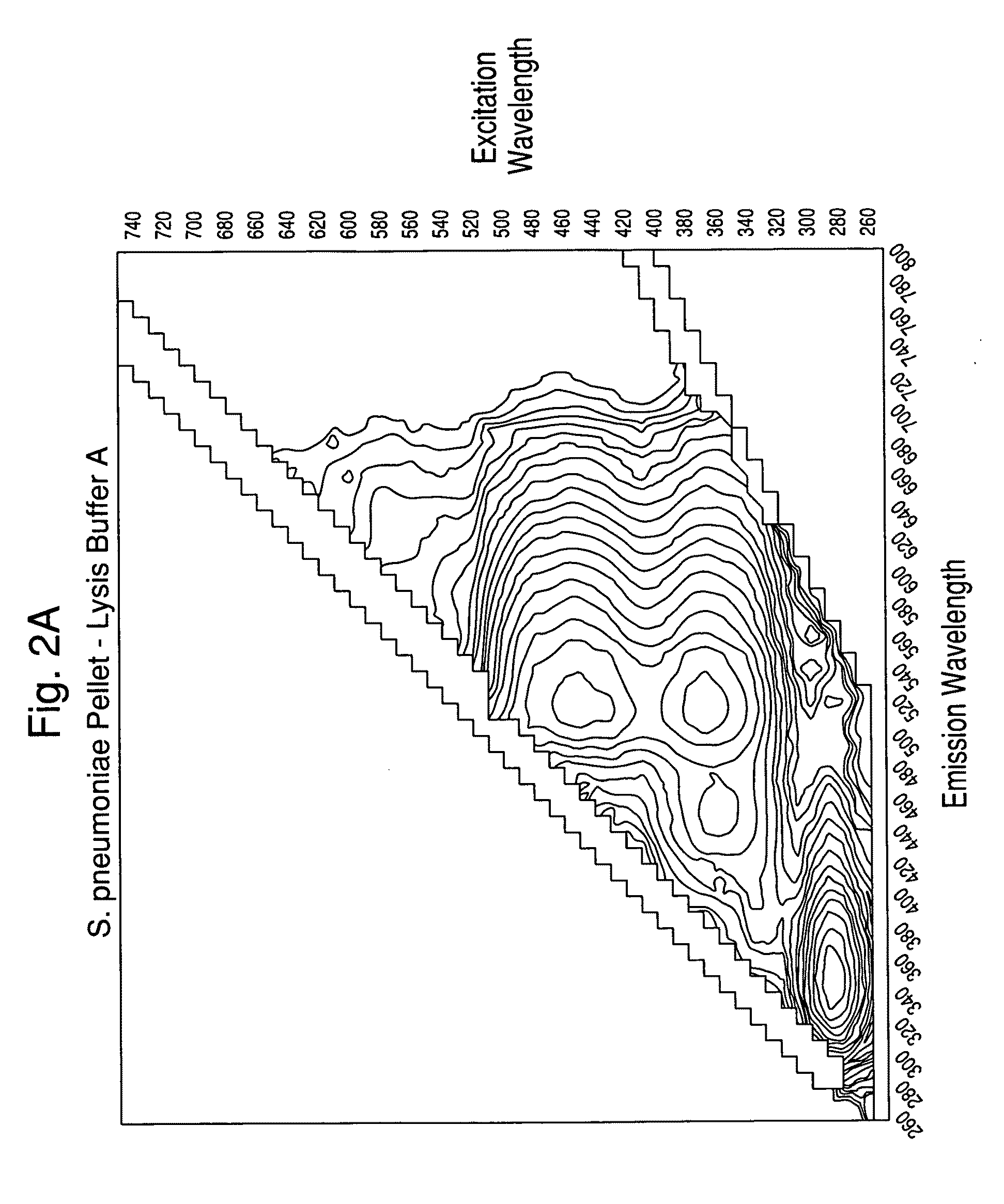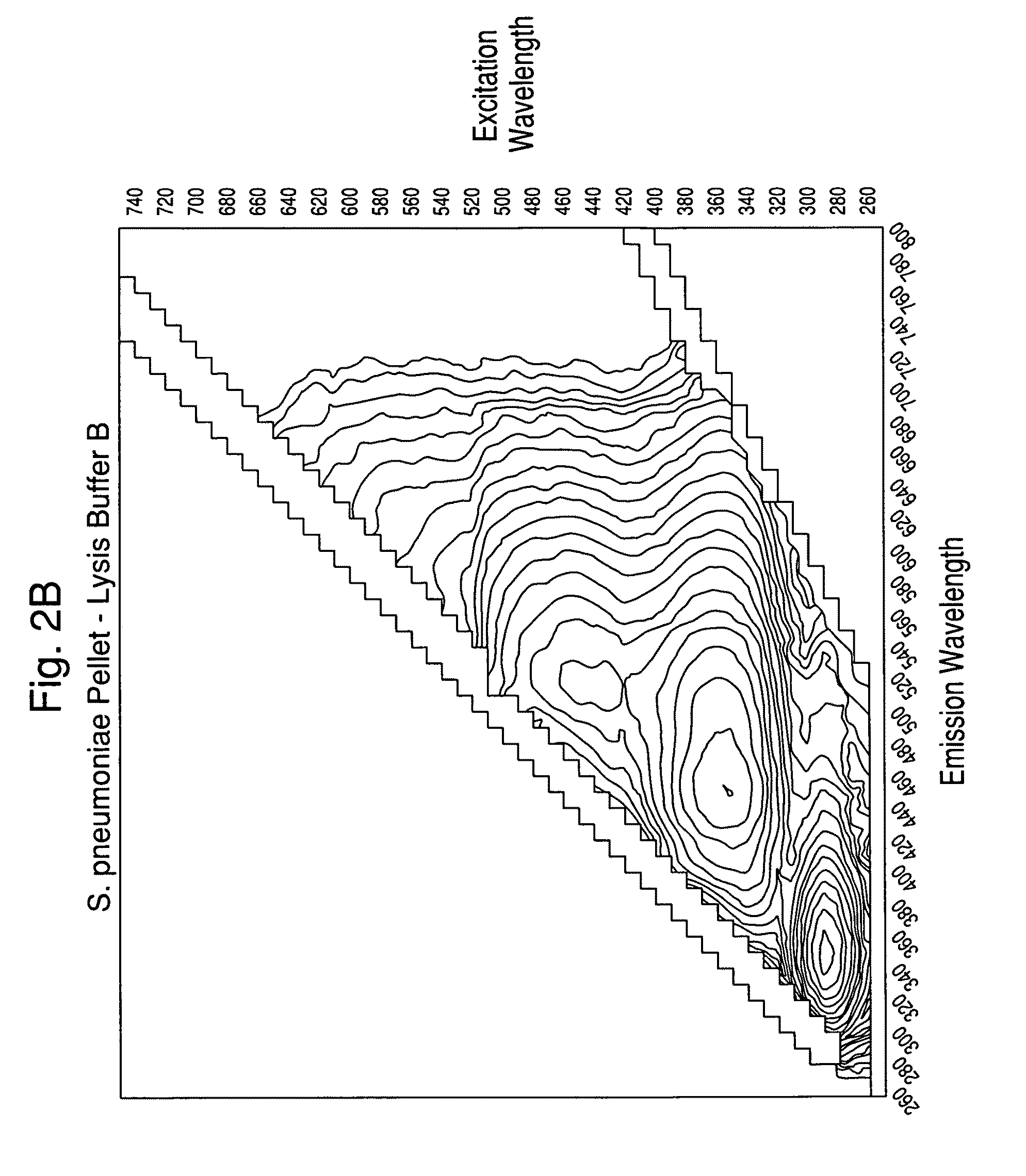Method for separation, characterization and/or identification of microorganisms using spectroscopy
a technology of spectroscopy and microorganisms, applied in the field of methods and systems for detecting, isolating and/or identifying microorganisms in samples, can solve the problems of bloodstream infection, high morbidity and mortality, and take several days to perform, so as to reduce the risk of handling infectious materials and/or contaminating samples, the effect of characterization and/or identification of microorganisms is faster, and the diagnosis is faster
- Summary
- Abstract
- Description
- Claims
- Application Information
AI Technical Summary
Benefits of technology
Problems solved by technology
Method used
Image
Examples
example 1
Rapid Microbial Separation and Identification Method
A. Lysis-Centrifugation Separation Procedure
[0088]A suspension of colloidal silica (0.2-0.5 mL; 1.040-1.050 gm / mL density) was added to several conical microcentrifuge tubes. Lysed positive BacT / ALERT® SA blood culture broth samples (0.5-1.0 mL) were overlaid onto the colloidal silica suspension. Alternatively, the colloidal silica solution can be added underneath the lysed blood culture broth using a needle or cannula.
[0089]Positive broth from cultures containing the following microorganisms were tested:[0090]E. coli, ATCC 25922[0091]E. faecalis, ATCC 29212[0092]S. aureus, ATCC 12600[0093]P. aeruginosa, ATCC 10145
[0094]The tubes were capped, and then spun in a microcentrifuge for 2 min at about 10,000 g at room temperature (20-25° C.). The supernatants were aspirated, then the purified microbial pellets were resuspended in 0.45% w / v NaCl to an optical density @ 660 nm of 0.40.
[0095]One portion of each suspension was transferred to...
example 2
Evaluation of the Rapid Microbial Purification and Identification Method
[0098]To assess the potential of the rapid identification concept described in Example 1, twenty-four isolates (6 strains of 4 species comprising C. albicans, E. coli, S. aureus and S. epidermidis) recovered from positive blood cultures were tested in the method.
[0099]SPS-anticoagulated blood was collected from three donors and pooled. Ten mL of fresh human blood was added to BacT / ALERT® (BTA) SA blood culture bottles (bioMérieux Inc., Missouri). Suspensions of each of the isolates were prepared in tryptic soy broth (TSB). Each bottle was inoculated with 0.4 ml of a 103 / mL suspension and the bottles were incubated at 36° C. in a BTA cabinet. Four BacT / ALERT® SA bottles containing 10 mL blood but no organisms were included as negative controls.
[0100]Positive bottles were removed from the BTA cabinet within 3 hours of flagging positive. A negative control bottle was removed with each set of positive bottles (by sp...
example 3
Assessment of Lysis Buffers
[0102]Experiments were carried out to assess the separation efficiency and microbial intrinsic fluorescence (MIF) profiles of freshly positive S. pneumoniae WM-43 blood culture broth treated with harsh and mild lysis buffers. The following lysis buffer formulations were tested: (A) 2.0% TX100-R in 0.5M CAPS, pH 11.7 (harsh=LB−A); (B) 0.75% TX100-R in 0.5M CAPS, pH 11.7 (mild=LB−B); and (C) 0.45% TX100-R in 0.3M CAPS, pH 11.7 (mild=LB−C). 1.0 mL of lysis buffers A and B and 2.0 mL of lysis buffer C were placed in screw-capped tubes and the tubes were placed in a rack in a 37° C. water bath. Samples of broth (4.0 mL) were removed from a S. pneumoniae WM43-positive BacT / ALERT® SA culture bottle using a 5 mL syringe and 18G needle within 5 minutes of flagging positive in the BTA system. The broth was quickly dispensed to each lysis buffer-containing tube and the tubes were capped and vortexed for approximately 5 seconds. A test broth from overfilled (15 mL blo...
PUM
| Property | Measurement | Unit |
|---|---|---|
| temperature | aaaaa | aaaaa |
| temperature | aaaaa | aaaaa |
| temperature | aaaaa | aaaaa |
Abstract
Description
Claims
Application Information
 Login to View More
Login to View More - R&D
- Intellectual Property
- Life Sciences
- Materials
- Tech Scout
- Unparalleled Data Quality
- Higher Quality Content
- 60% Fewer Hallucinations
Browse by: Latest US Patents, China's latest patents, Technical Efficacy Thesaurus, Application Domain, Technology Topic, Popular Technical Reports.
© 2025 PatSnap. All rights reserved.Legal|Privacy policy|Modern Slavery Act Transparency Statement|Sitemap|About US| Contact US: help@patsnap.com



